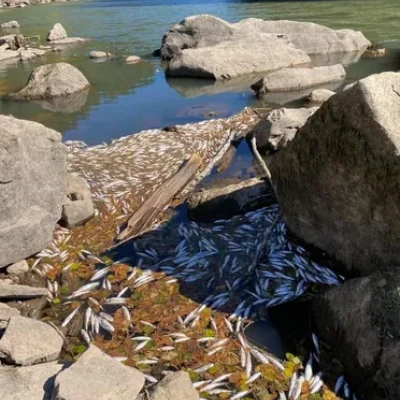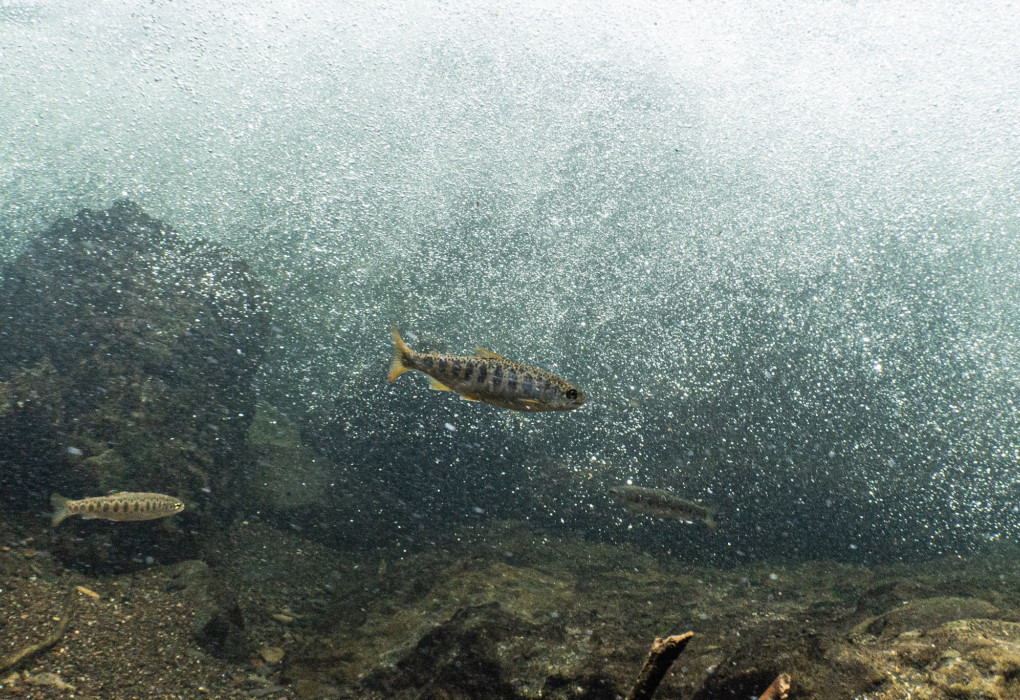Kokanee Fish-Kill on South Santiam, Native Fish Safe
Over the weekend, tens of thousands of non-native kokanee salmon died between Green Peter and Foster reservoirs as a result of new deep water drawdowns of the reservoirs intended to help native fish, such as imperiled wild spring Chinook salmon.
After receiving inquiries from concerned anglers and recreationists observing the dead kokanee, Oregon Department of Fish and Wildlife staff collected and analyzed the dead fish and determined that barotrauma, not pollution or infection, was the cause of death. Barotrauma is like the bends, but for fish. Kokanee salmon were swimming deep in the reservoir, approximately 100’, seeking cooler water temperatures, when the dam’s regulating outlet was opened to lower the elevation of the reservoir. These kokanee salmon were flushed downstream under high pressure and died as a result of gas bubbles in their bloodstream and body cavity.
While any fish kill is a reason for inquiry to Fish and Wildlife, kokanee salmon are a landlocked species of sockeye salmon stocked from hatcheries into reservoirs across the Willamette Basin for sport fisheries. These fish are neither native to the Willamette River nor are they at risk. In Oregon, we have policies that place the highest value on the protection and recovery of wild, native fish. Nevertheless, Native Fish Society staff are in contact with the Oregon Department of Fish and Wildlife to track this unfortunate impact to a popular sport fishery.
This is the first year that the Army Corps of Engineers has performed a deep drawdown of the Green Peter and Foster reservoirs. The intent of the drawdown is to provide a flowing current through the reservoir areas to allow ESA-listed juvenile Chinook salmon to swim through the dam regulating outlets - bypassing the turbines and avoiding expensive and ineffective “trap and haul” fish passage. Thankfully, threatened native fish have not been impacted by the rapid drawdown of the reservoir. Juvenile Chinook salmon are unable to dive down more than 25 feet in depth, meaning they are not near, nor subject to the current flowing through the regulating outlet in the dam.
While an imperfect solution, near term deep drawdowns are one of the only ways showing promise for fish passage at high head dams in the Willamette Basin built for flood control. Without near term access to historic cold water habitats currently found above the dams, threatened wild spring Chinook salmon and winter steelhead, are in real danger of blinking out. These short term actions are also critical measures to maintain the option for more permanent long term modifications to the Willamette Project to benefit native fish and Oregon’s largest watershed.
As the reservoir levels continue to be lowered, we urge the Army Corps of Engineers to learn from the current situation and review the pace of the drawdown to provide the intended fish passage for juvenile Chinook salmon while not exacerbating the impacts to other valued fish, like kokanee.
To learn more about the near term and long term efforts to revive the Willamette River’s imperiled wild salmon and steelhead please check out the ReWild the Willamette Campaign.

